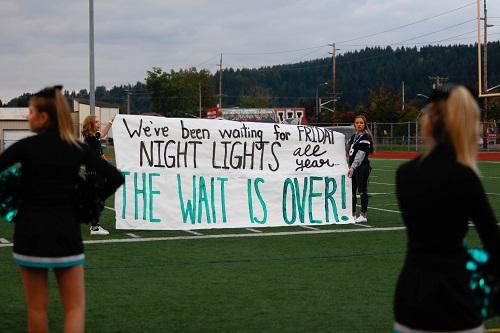

Before the decision by Reynolds, only two spectators per athlete and cheerleader were allowed to attend high school sports games, a source of complaints from athletes with bigger families.
The change coincides with a drop in the number of hospitalizations for the virus, leading to the inevitable question: Could this be the start of a trend for other states? And the answer is this: It depends. As of the turn of the new year, Iowa’s COVID-19 hospitalizations have declined to a level not seen since late October, but positivity rates are on the rise once again.
To add an additional layer of complexity, Reynolds’ new ruling only applies to school districts that put it into place by default; they are all free to create tighter restrictions, should they be more comfortable doing so.
“What we’ve been telling them is you can go more restrictive than what the proclamation says, but you can’t go less restrictive,” Tom Keating, Iowa High School Athletic Association Director, told reporters at KCRG News. “Each venue is different as far as what they can accommodate, and then by sport it’s different. You can accommodate in a gym on a Saturday with four mats on your floor, running a wrestling is different than what you can do on Friday night when you’ve got a basketball game.”
School districts have already begun to create their own regulations. Some have begun relaxing their rules but others, including the Top of Iowa Conference, have held firm.
"The Top of Iowa Conference will continue with the current attendance restrictions until further notice unless a local school district determines that they have the ability to accommodate a larger crowd," the conference told KIMT-3 News. The conference consists of more than a dozen North Iowa schools.
Fans will still be required to wear face masks, no matter what the spectator attendance is.
Iowa is easing up on restrictions across the board. In December, the Des Moines Register carried the news that bars and restaurants could resume normal operating hours and that there would no longer be a limit on the size of gatherings other than distance between people, but other rules to limit the spread of the coronavirus would remain in place. These included requirements that individuals unable to socially distance should wear masks when in indoor public spaces. Bars and restaurants were also required to limit groups to no more than eight people, unless they were all members of the same household. Groups of diners must also be six feet from other groups.
Whether this will help establish Iowa as a new mecca for youth sports, along with states like Florida and Texas where tournaments are now headed, remains to be seen; however, it is worth noting that the MLB's "Field of Dreams" Games has been rescheduled for this summer in -- Dyersville, Iowa. So Iowa is no stranger to the sports spotlight.
Of course, Iowa needs to maintain its lower case numbers for all this to occur.
"We've made tremendous progress over the last several weeks, in large part due to Iowans adjusting their behavior, and we're seeing the positive impact that it had," Reynolds said at a news conference. "This doesn't mean that our work is done, but it's true that we have the tools necessary to effectively manage the virus while balancing the activities of our daily lives."
The subject of fans in the stands has been a long-running debate. The National Federation of State High School Associations (NFHS) recommends that each school conduct a safety review of its facilities, and it has created documents to assist with this.
NFHS tends to lay the responsibility with administrators to set an example when it comes to establishing that facilities are safe, and for establishing transparency and consistency in rule-making. Among the notes: “No individual administrator can create a perfectly safe environment, but one administrator can create an environment where facilities are valued and kept to high safety standards. An important part of facility management is making sure that everyone understands that they play a role in safety.”

